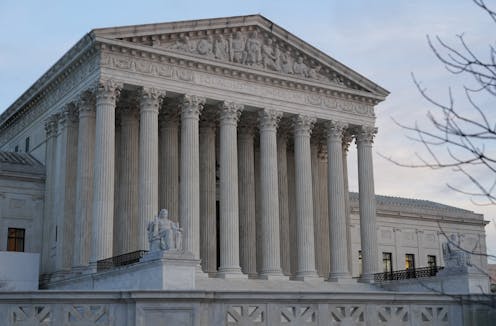
Science + Tech – Articles, Analysis, Opinion
Displaying 601 - 625 of 3582 articles

The gut microbiome plays a big role in mediating how the immune system responds to perceived threats, which include the body’s own nerves.

Using a mathematical model, researchers found that good hygiene can reduce the harmful effects of antibiotic use.

A local legend of a mysterious bird with big eyes grew into the discovery of the Príncipe scops owl. A biologist on the team tells the story of finding and cataloging this new species.

Poppy seeds can become contaminated with opiates during harvesting. For the US Defense Department, invoking a ‘poppy seed defense’ may not be enough to rule out a positive drug test result.

The idea of a creature like the Loch Ness monster fascinates people. But does the scientific evidence say it’s a prehistoric beast or total fake?

A biologist who studies how viruses spread from animals to people explains the process of spillover and the risks posed by the new bird flu that has spread across the globe.

With the help of thousands of citizen scientists, a new study measured exactly how much brighter night skies are getting every year.

Justices are weighing the arguments in two cases that have the potential of changing the way social media platforms operate.

By learning what parts of the brain are crucial for imagination to work, neuroscientists can look back over hundreds of millions of years of evolution to figure out when it first emerged.

The war in Ukraine has dramatically increased the use of drones in warfare, from repurposed consumer quadcopters to flying bombs to remotely piloted warplanes.

FTD leads to changes in personality and behavior. Understanding its genetic and molecular causes could lead to new ways to treat neurodegenerative diseases.

A year ago, the Ukrainian military was largely equipped with Soviet-era weapons. It has since seen an influx of high-tech weapons. But it’s less what than how that’s made a difference.

The technology exists to build autonomous weapons. How well they would work and whether they could be adequately controlled are unknown. The Ukraine war has only turned up the pressure.

People don’t all age at the same rate. Untangling the factors that influence health and disease – such as epigenetics, demographics and behavior – could lead to better care for those who need it most.

Black, Latino, Asian and Indigenous teens have different online experiences – both positive and negative – than their white peers. These differences are overlooked when research focuses on white kids.

Fossil evidence of how the earliest life on Earth came to be is hard to come by. But scientists have come up with a few theories based on the microbes, viruses and prions existing today.

The slow release of information about the chemical spill and results of air and water tests have left many questions about the risks and long-term impact.

If you want to use an exoskeleton to improve balance, a study finds that superhuman reflexes can help you stay upright.

There are thousands of sightings of UFOs – or ‘unidentified aerial phenomena’ as the US government prefers to call them – every year.

Evidence in Earth’s natural archives, from tree rings to seafloor sediments, points to one trend. Some climate models suggest another.

The idea that scientists could warn a region that a big quake was coming at a certain time – with enough advance notice for large-scale preparation and evacuation – remains a dream, not a reality.

Vital records document the birth, death, marriage and divorce of every individual. A more centralized system in the US could help public health researchers better study pandemics and disease.

Lab testing provides doctors with essential information to help them diagnose and treat disease. Here’s what happens behind the scenes after you roll up your sleeve for a blood draw.

How do you determine whether one brand is similar enough to another to infringe on its trademark? Researchers propose that comparing brain scans could be an option.

An astronomer takes us on a tour of the universe to learn about the birth of stars and planets and how they get their spin.
